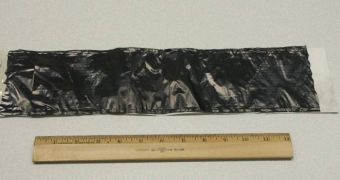The newest wonder coming from the small world of nanotubes is the buckypaper, which resembles carbon paper in appearance and manipulation but is, in fact, 10 times lighter and 500 times tougher than steel. In the future, when the technology is up and running and the buckypaper is made on a commercial scale, it could help build faster computers, lightning protection, TV screens, military armor, lightning protection devices, cars, planes, spacecrafts, stealth technology and a lot of other things one can hardly imagine possible with our current technology.
The buckypaper was discovered by accident, as many good things are (although this doesn't mean you should start making mistakes and hope that something good will come out). 23 years ago, UK chemist Harry Kroto and a team of scientists from Rice University tried to replicate the process of a star's carbon emission. All went as expected, with a single exception: the occurrence of a spherical carbon molecule with 60 atoms, which eventually brought them a Nobel Prize for chemistry in 1996, as the third pure carbon form ever discovered (after diamond and graphite).
Sumio Iijima, a physicist from Japan, came up on his own with a variation of the model in the shape of a tube 50,000 times thinner than a hair, which was later adapted to create a paper sheet by mesh-filtering the carbon nanotubes that clumped together in a liquid suspension. It is the surface that nanotubes can cover that gives the paper such strength. “If you take a gram of nanotubes, just one gram, and if you unfold every tube into a graphite sheet, you can cover about two-thirds of a football field,” explains Ben Wang, director of the High-Performance Materials Institute in Florida.
The problems that the scientists face related to developing and achieving the maximum potential strength of the buckypaper are that nanotubes are sticking together in impossible angles (but this was solved by using magnetism in order to align them properly), and that they are too smooth, which lowers the reciprocal adherence needed to form the paper. However, the researchers are confident that they can alter the surface of the nanotubes just enough to achieve the perfect result. “Nanotubes obviously are no longer just lab wonders. They have real world potential. It's real,” exclaims Wang, while Les Kramer, chief technologist for Lockheed Martin Missiles and Fire Control states that, “If this thing goes into production, this very well could be a very, very game-changing or revolutionary technology to the aerospace business.”

 14 DAY TRIAL //
14 DAY TRIAL //